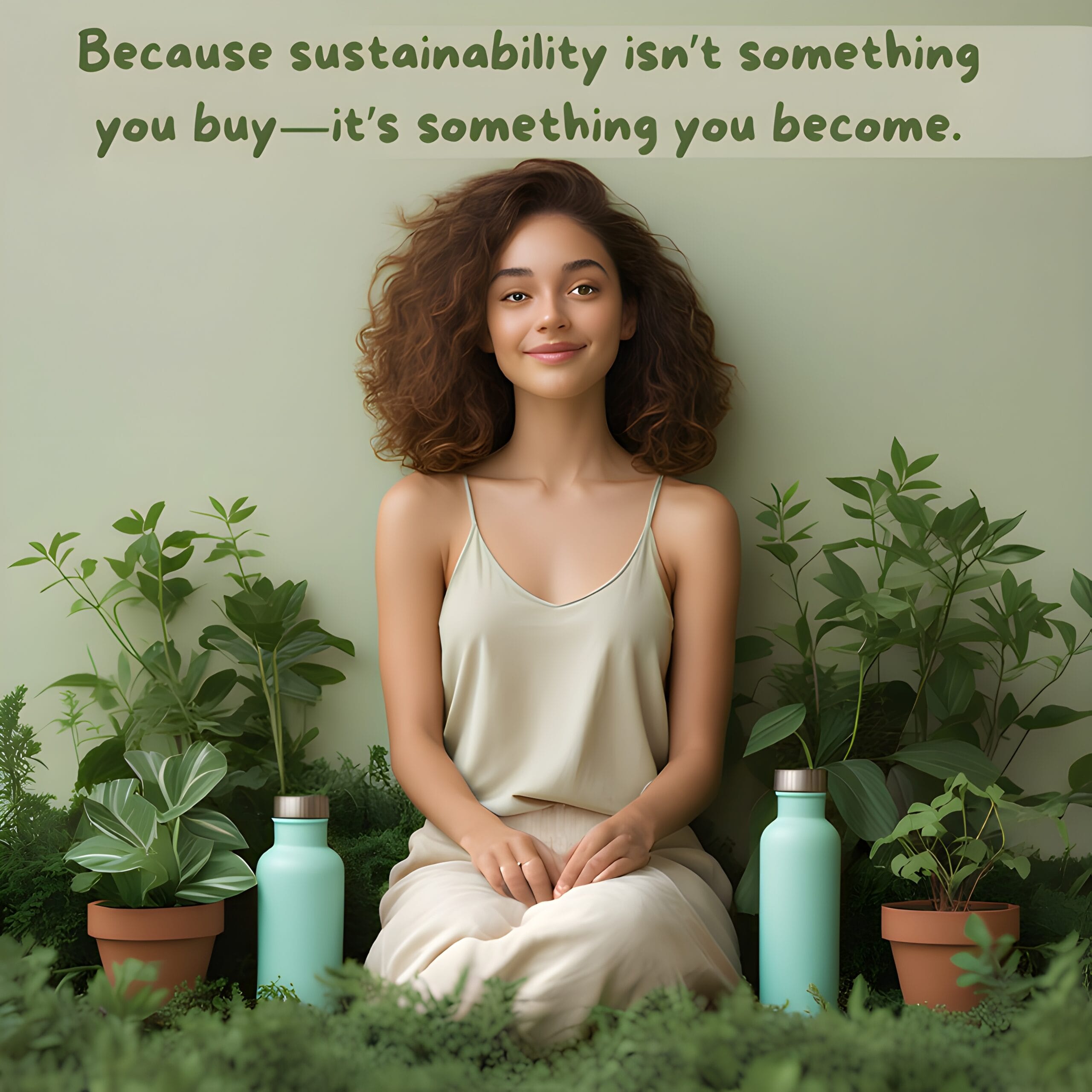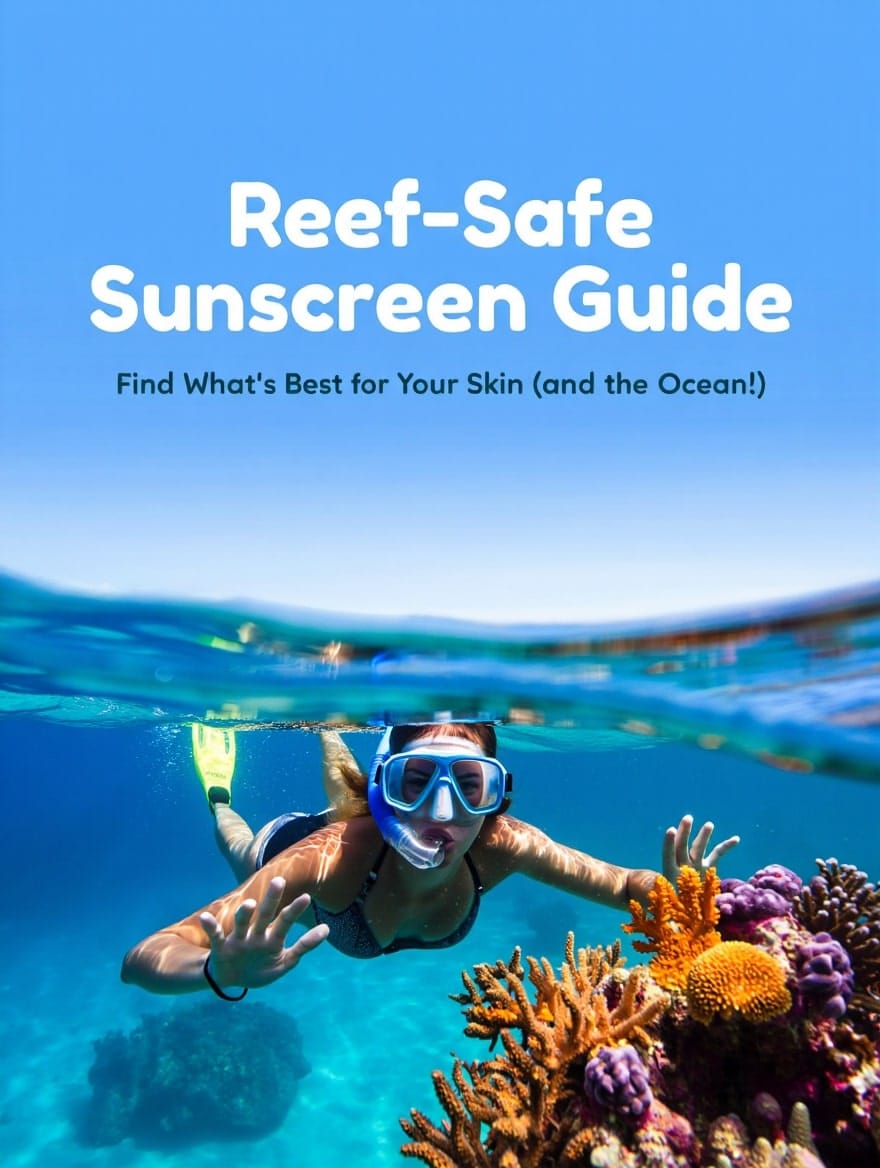
Menu
Embrace your beauty with nature’s touch. Discover simple, zero-waste beauty habits that care for you and the planet.
Sustainable Beauty & Fashion
Celebrate the glow you were born with. Discover self-care that nurtures both your natural glow and the planet. From eco-friendly skincare tips to mindful beauty choices, embrace a routine that’s as kind to nature as it is to you.
The Problem:
Beauty’s Hidden Waste Crisis
What is sustainable beauty?
It’s about rethinking our routines to reduce waste and protect the planet. Right now,
- Every year, the personal care industry generates over 120 billion units of packaging—much of it non-recyclable plastic that ends up in landfills or the environment.
- Fast fashion produces around 92 million tonnes of textile waste annually, much of which is burned or dumped in landfills, while contributing nearly 10% of global carbon emissions
- Globally, 91 percent of all plastic ever produced has never been recycled—either sitting in landfills, incinerated, or scattered through ecosystems
- In a global survey, over 80 percent of tap water samples tested positive for microplastics
Small Swaps, Big Impact
Sustainable Beauty & Fashion Practices
Discover how tiny changes in your daily routine can create a ripple effect for the planet. From DIY natural skincare to mindful fashion choices, these simple and affordable practices help you look good, feel good, and live in harmony with nature. One habit at a time, you can make beauty and fashion both stylish and sustainable.
Why It Matters
Beauty waste impacts far more than just trash volumes — it affects ecosystems, health, and climate on a global scale:

Oceans & Marine Life
Microplastics from cosmetics and packaging enter waterways, harming marine species and disrupting food chains.

Soil & Agriculture
Synthetic chemicals from beauty products leach into the soil, affecting crop health and biodiversity.

Climate Change
The production, packaging, and transportation of beauty products contribute significantly to greenhouse gas emissions.

Health
Long-term exposure to certain synthetic ingredients has been linked to hormonal disruption, allergies, and other health risks.
Beauty DIY: Nature’s Simple Alternatives
The Power of Sustainable Choices
You don’t always need store-bought products. Beauty DIY recipes using oats, honey, aloe vera, or turmeric can nourish your skin naturally while cutting down on waste.





Care for You, Care for Earth
Every small swap matters. Replace disposables with reusables, try natural beauty DIY routines, and choose sustainable beauty care over chemical-heavy alternatives.
every action you take is a thank-you note to our planet.






The Collective Impact
Small swaps might feel insignificant, but together they create a tidal wave of change
If everyone adopted even one zero waste beauty habit each month, billions of plastic items could be diverted from landfills. Together, these sustainable beauty practices create a ripple effect.
Billions of plastic items would be kept out of landfills and oceans each year
Global demand for sustainable packaging and ethical sourcing would surge, pushing companies to change their practices.
Carbon emissions from manufacturing and shipping beauty products could drop significantly.
Less chemical waste would flow into waterways, protecting marine life and freshwater ecosystems.
Your single choice isn’t just a personal win — it’s part of a global movement toward cleaner beauty and a healthier planet.

You’re Already Beautiful — Naturally
Nature has given you everything you need to shine. You don’t need a shelf full of wasteful, chemical-heavy products or piles of trendy fast-fashion clothes to define your beauty.
You are the trend
Someone who cares for nature.
Your glow is already within you. Let nature keep it that way.
Sustainable Beauty & Fashion FAQ
What is sustainable beauty?
Sustainable beauty means choosing products and routines that are kind to both your skin and the planet. It focuses on natural, safe ingredients, eco-friendly packaging, cruelty-free testing, and ethical sourcing.
How can I identify greenwashing in beauty products?
Greenwashing occurs when brands claim to be eco-friendly but aren’t. Watch out for vague claims like “all-natural” or “eco,” which often lack certifications to back them up. Instead, check ingredient lists, look for transparent sustainability reports, and avoid brands that overuse plastic or one-time packaging.
What natural labels or certifications should I trust?
When it comes to sustainable beauty, not all labels are equal. Look for third-party certifications that verify eco-friendly, cruelty-free, and ethical practices.
In the USA
- USDA Organic – Confirms products are made with certified organic ingredients.
- COSMOS Organic / Natural – Widely trusted in the US and Europe for natural and organic sourcing.
- Leaping Bunny / Cruelty-Free International – Guarantees no animal testing.
- Fair Trade Certified – Ensures ethical sourcing, fair wages, and safe working conditions.
In India
- India Organic / NPOP (National Programme for Organic Production) – Certifies organic farming and sourcing.
- ECOCERT India – Recognised globally, it certifies organic and natural products.
- PETA India – Cruelty-Free & Vegan – Confirms no animal testing and no animal-derived ingredients.
- Fairtrade India – Supports ethical trade and fair wages for farmers and workers.
Tip: Don’t rely only on buzzwords like “natural” or “green.” Always check for these recognised seals, which carry more trust than marketing claims.
Are zero-waste beauty products really worth it?
Absolutely — but zero-waste beauty isn’t only about buying new eco-products. You can achieve sustainable beauty by adopting simple habits and easy DIYs:
- First, make the most of what you already own — use products fully instead of tossing them half-used.
- Try household DIY alternatives (like aloe, oats, or honey) that reduce dependency on packaged items.
- When you do buy, choose only what’s necessary, durable, refillable, and long-lasting — such as shampoo bars, bamboo razors, or glass jars.
- And most importantly, discard responsibly so nothing ends up harming the environment.
Sustainability starts with how you use and care, not how much you consume.
What fabrics are sustainable in fashion?
The most sustainable fabric is the one you already own. Before buying new, try to upcycle or reuse your clothes — for example, turn old shirts into kitchen or dining napkins, tote bags, or cushion covers. Extending the life of existing fabrics saves the most resources.
But if you’re looking to buy, here are better choices:
- Organic Cotton – Grown with less water and no toxic pesticides.
- Hemp & Linen – Strong, durable, and naturally biodegradable.
- Recycled Polyester – Gives plastic waste a second life.
- Wool – Long-lasting and biodegradable if untreated.
Always choose natural, responsibly sourced fabrics and prioritise quality over quantity — fewer, better clothes = lower fashion footprint.
What is slow fashion vs. zero-waste vs. circular fashion?
- Slow Fashion: Mindful shopping—buy less, choose quality, keep it longer.
- Zero-Waste Fashion: Designing clothes with no fabric wasted in production.
- Circular Fashion: Clothes designed to be reused, repaired, or recycled back into new garments.
Together, they all fight fashion waste and promote mindful consumption.
How can I reduce my beauty routine’s environmental footprint?
- Swap disposables (cotton pads, razors) for reusables.
- Buy refillable or bulk products.
- DIY simple skincare from kitchen ingredients.
- Support cruelty-free, eco-conscious brands.
Small changes add up to a big impact!
How can upcycling help reduce textile waste?
Upcycling turns old clothes into something new—like making tote bags from old jeans or crop tops from oversized shirts. It saves textiles from landfills and gives your wardrobe a unique, personal touch.

Together, let’s grow a greener tomorrow.
Start your eco-conscious journey with us today




